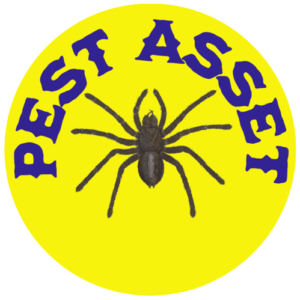Complete Guide to Beetle Control in Rocky River: Understanding and Managing Household Beetles
Looking for effective Rocky River beetle control solutions? This comprehensive guide will help you identify, prevent, and manage beetle infestations common to Northeast Ohio homes. From carpet beetles to wood-boring pests, we’ll explore science-based approaches to protect your home.
Common Household Beetles in Northeast Ohio
Understanding local beetle species is crucial for effective Rocky River beetle control:
Fabric and Carpet Beetles
- Varied Carpet Beetle (Anthrenus verbasci)
- Black Carpet Beetle (Attagenus unicolor)
- Furniture Carpet Beetle (Anthrenus flavipes)
Learn more about carpet beetles at Penn State’s Entomology Department
Pantry Beetles
- Drugstore Beetle (Stegobium paniceum)
- Cigarette Beetle (Lasioderma serricorne)
- Grain Beetle (Oryzaephilus surinamensis)
Explore pantry pest information at Michigan State University Extension
Wood-Boring Beetles
- Powderpost Beetles (Lyctidae family)
- Deathwatch Beetles (Anobiidae family)
- Old House Borers (Cerambycidae family)
Read about wood-boring beetles at Forest Products Laboratory
Identifying Beetle Infestations
Successful Rocky River beetle control starts with proper identification:
Visual Signs
- Adult beetles
- Larvae presence
- Exit holes in wood
- Frass (beetle droppings)
- Damage patterns
Common Damage Areas
- Stored food products
- Wooden structures
- Natural fiber fabrics
- Carpets and rugs
- Animal-based materials

Seasonal Beetle Control Tips
Spring
- Deep cleaning
- Fabric inspection
- Pantry organization
Summer
- Monitor entry points
- Check window screens
- Inspect outdoor wood
- Monitor light attractions
Fall
- Prepare for overwintering
- Check stored materials
- Seal entry points
- Clean storage areas
Winter
- Monitor indoor activity
- Check heating systems
- Inspect stored items
- Maintain low humidity
Scientific Research and Resources
Academic Resources
Local Resources
- Cleveland Museum of Natural History
- Ohio Department of Agriculture
- Local Extension Services

Health and Property Impacts
Understanding risks helps prioritize Rocky River beetle control measures:
Health Concerns
- Allergic reactions to carpet beetle larvae
- Food contamination from pantry pests
- Secondary infections from scratching
- Respiratory issues from frass
Property Damage
- Structural weakening from wood borers
- Fabric destruction
- Food product losses
- Furniture damage
- Historic artifact destruction

Prevention: Key to Rocky River Beetle Control
Interior Prevention
- Regular inspection of susceptible materials
- Proper food storage in airtight containers
- Climate control (humidity management)
- Regular cleaning and vacuuming
- Early intervention when signs appear
Exterior Prevention
- Proper drainage
- Wood treatment
- Moisture control
- Debris removal
- Regular maintenance
Find prevention strategies at Ohio State University Extension
Natural Control Methods
Environmental Management
- Reduce humidity
- Proper ventilation
- Temperature control
- Regular cleaning
- Proper storage practices
Explore natural pest control at USDA Agricultural Research Service
Professional Beetle Management
Consider contacting Pest Asset for professional Rocky River beetle control when:
- Infestations are widespread
- DIY methods fail
- Multiple species are present

Beetle Biology and Behavior
Understanding beetle lifecycle helps with Rocky River beetle control:
Life Cycles
- Egg stage
- Larval development
- Pupal stage
- Adult emergence
- Breeding patterns
Access beetle biology information at Smithsonian Institution
FAQs About Beetle Control
Q: How long does beetle treatment typically take? A: Treatment duration varies by species and infestation severity, typically 2-6 weeks for complete control.
Q: Can beetles damage home foundations? A: While most beetles don’t damage foundations, some wood-boring species can affect structural wooden elements.
Q: Are beetle treatments safe for pets? A: Many modern treatments are pet-safe when properly applied, but precautions should be taken during application.
Remember, successful beetle management in Rocky River requires a combination of prevention, identification, and appropriate control measures. By following these guidelines and staying informed, you can protect your home from beetle damage while maintaining a healthy living environment.
